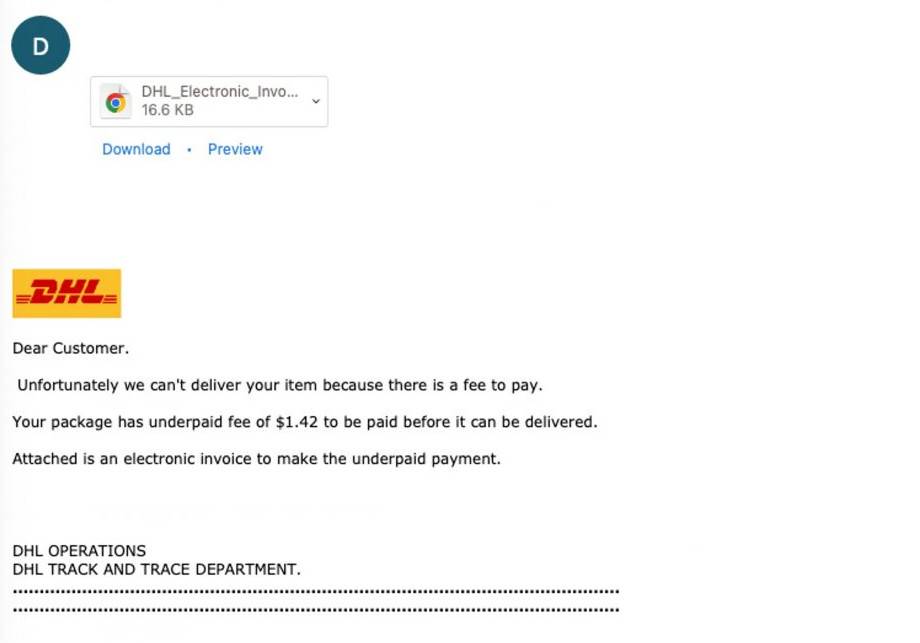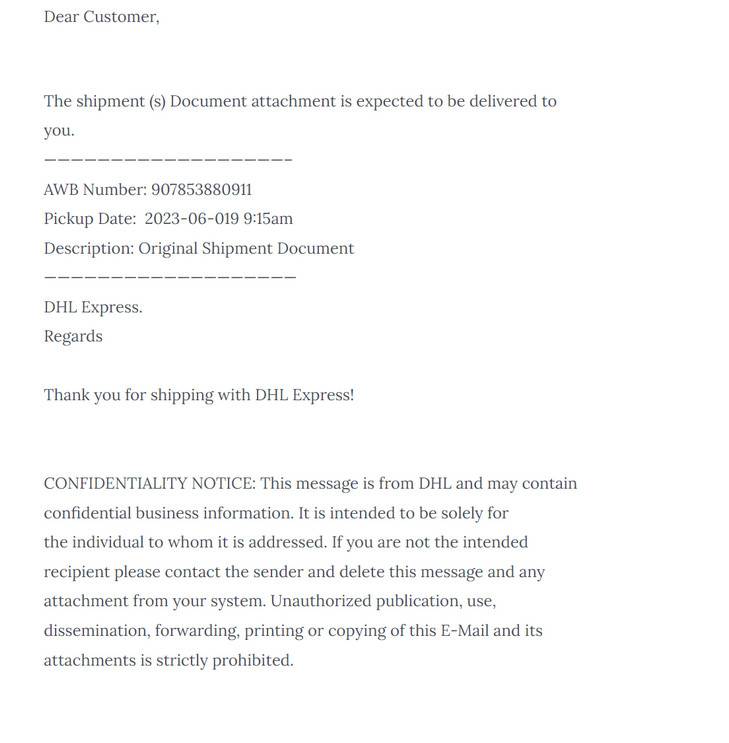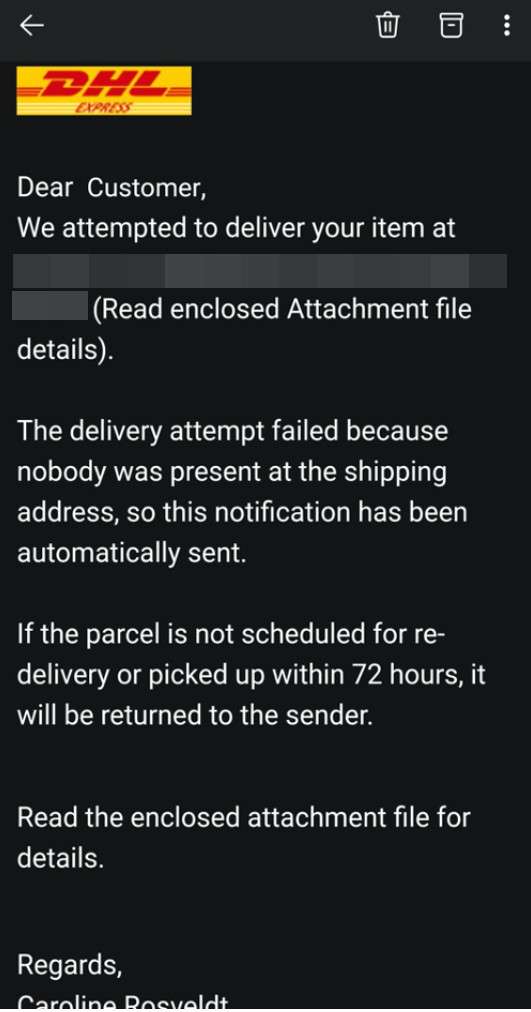Scammers are aggressively using the DHL name to send phishing text messages and emails aimed at stealing personal and financial information from unsuspecting victims. These sophisticated scams convince recipients to share confidential details under the guise of a missed parcel delivery or other shipping-related issue that requires urgent attention.
This in-depth article will uncover how the DHL scams operate, red flags to watch for, and most critically, how to protect yourself from being deceived. With more citizens and businesses relying on courier services amidst the pandemic, awareness of these delivery and customs imposter scams is crucial.
This Article Contains:
Overview of the DHL Scam
This scam involves fraudulent text messages or emails that appear to come from DHL about issues with a package delivery or customs fees. The messages mimic DHL branding and messaging style.
Some variant of the following shipping-related issues are typically cited:
- A parcel is stuck in customs and fees must be paid
- There is a pending delivery you must confirm
- Your package delivery address needs to be validated
- Your shipment has shipping issues that require payment
No matter the story, the scammers posing as DHL then provide a phone number to call or link to click so the problem can supposedly be resolved. Their ultimate aim is to steal financial and personal information or infect devices with malware.
This scam surged during the pandemic as more people shopped online and anxiously awaited courier deliveries. Victims expect parcels and don’t suspect notifications from DHL are fraudulent.
The sophistication varies. Some scams have typos and inconsistencies, while others can appear very credible, replicating official DHL fonts, colors and logos. DHL has posted warnings on its website about the scams.
Key things to know about the scam:
- Uses real DHL branding – The texts and emails looks like authentic DHL communications. This fools many people.
- Pressures urgent action – Messages often say immediate payment is required or penalties will be incurred. This rushes victims into clicking without thinking.
- Directs victims to fake sites – The links and numbers go to convincing sham DHL pages where users enter personal or financial data.
- May include parcel numbers – Fake parcel IDs and details make the scam more believable and personalized.
- Originates from burner phones/accounts – Texts come from constantly changing cell numbers and disposable accounts are used for emails.
- Seeks sensitive information – Whether through fake sites or calls, the scammers want personal info, bank logins, credit card details, etc.
- Preys on parcel anticipation – People expecting a delivery are more likely to fall for notifications about shipping problems from the courier.
This scam has infiltrated many regions as more citizens fall victim. But awareness of how to spot fraudulent DHL communications will curb deception.
How the DHL Scam Works
DHL scammers operate through text messages or emails. Here are the step-by-step details on how both versions of the scam unfold:
DHL SMS Scam
- A text message is sent from a phone number disguised as an official notice from DHL. The number changes regularly to avoid blocking.
- The message claims there is an urgent issue with a package delivery using DHL branding and messaging. Common reasons given are customs fees owed or address confirmation needed.
- A link is embedded in the text to supposedly address the delivery problem. The link goes to a fake website impersonating the real DHL site.
- On the phony site, victims are instructed to enter personal information like name, address, ID number, phone, etc. to confirm delivery details. In other cases, financial account info is sought.
- The scammers now possess the victim’s sensitive data, either using it directly for identity theft or selling it online. If bank details are given, accounts can be drained.
- With the confidential information acquired, the criminals disappear. The temporary number and website leave virtually no trail. The victim’s data is now in the hands of scammers.
DHL Email Scam
- An email is sent to recipients spoofing the legitimate email and website of DHL. The “From” address mimics DHL but goes to the scammer.
- The email claims the recipient has a pending delivery, but there is a problem needing urgent action. Customs charges, address confirmation, redelivery fees, and shipping issues are commonly cited.
- A link within the email leads to a fake DHL website seeking personal information when entered by victims. In other cases, it may download malware onto the user’s device.
- The scam email prompts entry of bank account data, credit card numbers, photo ID, etc. to pay fictional fees – allowing immediate account access.
- Along with potential bank theft and malware installation, the scammers obtain personal data like name, phone, ID numbers, address, etc. to facilitate identity fraud.
- As with the text scam, the criminals have now acquired sensitive user details through the sham emails and sites. The disposable accounts used make the scammers difficult to trace.
Red Flags of the Scam:
- Spelling and grammar mistakes
- Threatening urgent calls to action
- Requests for financial account information
- Links to odd URLs or domain names
- Requests to download software
- Phone numbers from outside your region
- Lack of specific user and shipment details
How to Spot DHL Email Scams
DHL scammers use deceptive emails, but you can identify the frauds:
- Analyze the sender’s email address carefully. Scammers often mimic legitimate addresses.
- Watch for poor grammar, spelling errors, and other inconsistencies.
- Verify any unexpected attachments and hyperlinks before clicking. Hover over links to inspect.
- Be wary of threats demanding immediate action regarding payments or account updates.
- Check for missing details like your full shipping address, order numbers, etc.
- Look for urgent pleas for personal information like passwords or financial data.
- Ensure emails match previous DHL communications you’ve received.
- Forward scam emails to DHL at phishing@dhl.com for verification.
How to Spot DHL Text Message Scams
You can spot DHL text scams through these tips:
- Examine the sender’s number. Check it matches previous DHL texts or their official short code.
- Watch for odd links that don’t match DHL’s legitimate URL. Don’t click without verifying.
- Be suspicious of texts demanding you download software or apps.
- Look for threatening urgency about unpaid fees or penalties. DHL won’t threaten you over text.
- Verify any payment requests before taking action. Scammers often demand gift cards or wire transfers.
- Note down the tracking ID or parcel details and confirm directly with DHL.
- Check for missing personal details you’d expect like delivery address.
- Look for poor grammar, spelling, and other textual errors.
- Forward scam texts to 7726 for investigation. Report them to DHL also.
Trust your instincts if something seems suspicious and verify before taking action. Stay vigilant against these shipping scams.
What to Do if You Have Fallen Victim to the Scam
If you suspect you have been targeted or already fallen victim to a DHL text or email scam, take these recommended steps:
1. Contact your bank and credit card issuer.
If any financial information was shared, immediately contact your bank and card issuer. They can freeze accounts and block fraudulent charges. The quicker you notify them, the better.
2. Change any compromised passwords.
If you entered login credentials on fake sites or downloaded malware, rapidly change passwords for your email, bank accounts, social media, and other critical accounts. Enable two-factor authentication if possible.
3. Scan devices for malware.
Use quality antivirus software like Norton or McAfee to scan all involved devices for viruses and malware. Remove any infections detected.
4. Place fraud alert on your credit.
Contact credit bureaus to declare fraud alerts for your file. This flags any new activity for review, making it harder for scammers to open accounts in your name.
5. Monitor accounts and credit reports.
Watch bank statements, credit reports, and online logins closely for signs of misuse of your information in the months following the scam targeting you. Proactive monitoring helps.
6. Report the scam.
Alert DHL about both scam texts and emails by filing a complaint on their website. Also report SMS scams directly to your mobile operator.
7. Document details as evidence.
Retain records like screenshots of scam texts, emails, and sites as proof for claims and investigations. Note relevant dates, phone numbers, messages, losses, etc.
8. Wipe devices completely if severe infection.
For serious malware attacks, fully reset infected devices to factory default settings. This cleans out embedded malware. Reinstall apps afterwards.
9. Seek further help if identity theft occurs.
If scammers misuse your stolen data, file an identity theft report and contact agencies like the Identity Theft Resource Center for extended fraud resolution guidance.
Falling prey to the DHL scam can create substantial personal and financial troubles. But taking quick and thorough actions can help curb damages and prevent further negative impacts going forward.
The Bottom Line
Scam texts and emails impersonating DHL are a growing threat that citizens should be vigilant against. These fraudulent shipping notifications are designed to harvest users’ personal details and money.
By learning the scam tactics, recognizing warning signs, and acting fast if targeted, individuals can protect themselves from the havoc of identity theft and bank account draining. The insights provided here offer the awareness needed to avoid becoming another victim of these parcel delivery and customs scams.
Stay alert for questionable digital communications claiming to be from DHL. Verify any delivery issues directly with them. Follow prudent cyber security habits regarding links, downloads, and providing sensitive information to unconfirmed sources. With proper scam awareness, these frauds can be contained. But it requires an informed public that examines messages critically and understands this threat. Use the knowledge in this article to identify and evade DHL scams.














